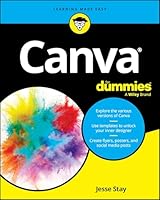
Beginner’s Guide to Create Models With 3ds Max 2018, 3rd Edition
- Length: 430 pages
- Edition: 3
- Language: English
- Publisher: Rising Polygon
- Publication Date: 2017-08-15
- ISBN-10: B074V871Z2
- Sales Rank: #1552661 (See Top 100 Books)
The Beginner’s Guide to Create Models With 3ds Max 2018®, 3rd Edition textbook offers a hands-on exercises based strategy for all those digital artists who have just started working on the 3ds Max [no experience needed] and interested in learning modeling in 3ds Max. This brilliant guide takes you step-by-step through the whole process of modeling. From the very first pages, the users of the book will learn how to effectively use 3ds Max for hard-surface modeling.
The strength of this textbook that it teaches all of the important concepts in an easy to understand language. As the readers move from hands-on exercise to hands-on exercise, they will be building their own portfolio of high quality artwork.
What you need?
To complete the examples and hands-on exercises in this textbook, you need 2018 version of Autodesk 3ds Max.
What are the main features of the book?
The book is written using 3ds Max 2018 in an easy to understand language.
Polygon and Spline modeling techniques covered.
All modifiers explained.
34 Hands-on exercises and practical tests to hone your skills.
Detailed coverage of tools and features.
Additional tips, guidance, and advice is provided.
Important terms are in bold face so that you never miss them.
Support for technical aspect of the book.
3ds Max files and textures used are available for download from the accompanying website.
You will also get access to a ePub file that has the color images of the screenshots/diagrams used in this book. These images will help you to understand the hands-on exercises and output. The ePub file is included with the resources.
How This Book Is Structured?
This book is divided into following units:
Unit MI1 – Introduction to 3ds Max – I
Understanding workspaces
Navigating the workspace
Customizing the interface
Understanding various UI components
Working with the file management commands
Setting preferences for 3ds Max
Working with viewports
Setting preferences for the viewports
Creating objects in the scene
Selecting objects
Using the navigational gizmos
Moving, rotating, and scaling objects
Getting help
Per-view Preferences, Asset Library, and Game Exporter
Unit MI2 – Introduction to 3ds Max – II
Creating clones and duplicates
Understanding hierarchies
Working with the Scene and Layer Explorers
Understanding the Mirror, Select and Place, and Select and Manipulate tools
Working with the Align and Array tools
Working with precision and drawing aids
Understanding modifiers, and normals
Unit MM1 – Working with Geometric Primitives and Architectural Objects
Creating and modifying Standard Primitives
Creating and modifying Extended Primitives
Working with the Architectural objects
Setting the project folder
Using the Align and Mirror tools
Creating clones
Using Scene Explorer
Creating a group
Setting grid spacings
Using the Transform Type-In dialog
Using the Array dialog
Specifying the units for the scene
Unit MM2: Working with Polygons
Working with the polygon modeling tools
Using the polygon modeling techniques
Selecting polygon sub-object
Transforming sub-objects
Soft selecting sub-objects
Unit MM3: Graphite Modeling Tools
Working with the Graphite Modeling Tools
Selecting sub-objects
Creating models using the tools available in the Ribbon
Unit MM4: Working with Shapes
Generate planar and 3d surfaces
Paths and shapes for the loft components
Generate extrusions
Generate revolved surfaces
Define motion path for animations
Unit MM5: Modifiers
Using modifiers
Stack display
Object-space modifiers vs World-space modifiers
How transform affects modifiers
Unit MB: Bonus Hands-on Exercises
Table of Contents
Unit MI1: Introduction to 3ds Max – I
Unit MI2: Introduction to 3ds Max – II
Unit MM1: Working with Geometric Primitives and Architectural Objects
Unit MM2: Working with Polygons
Unit MM3: Graphite Modeling Tools
Unit MM4: Working with Shapes
Unit MM5: Modifiers
Unit MB: Bonus Hands-on Exercises







